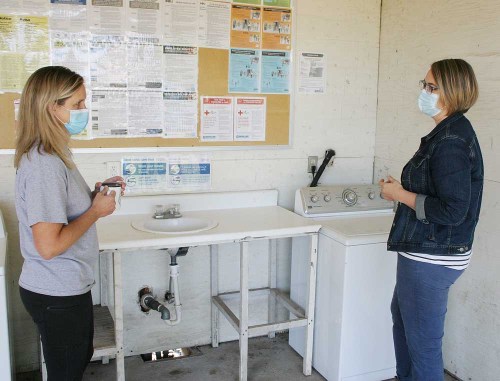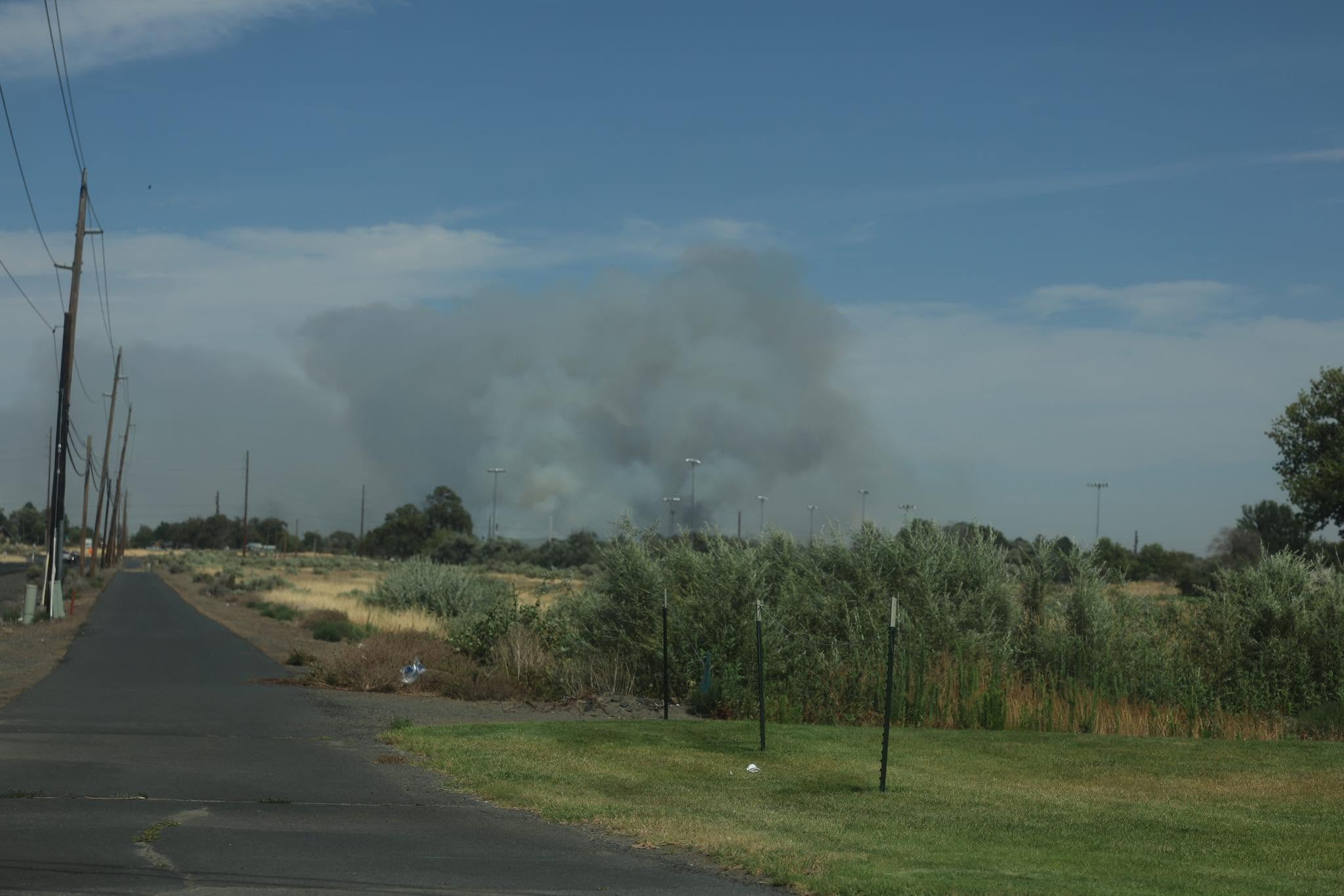New COVID-19 workplace rule poses challenges for Oregon farms, ranches
Published 3:00 pm Monday, November 30, 2020

- Molly McCargar, left, of Pearmine Farms, talks about complying with temporary COVID-19 farmworker protections with Alexis Taylor, director of the Oregon Department of Agriculture. Farms are racing to comply with a new set of state-imposed guidelines aimed at curbing workplace outbreaks of COVID-19.
SALEM — Harvest season may be over, but Oregon farms are racing to comply with a new set of state-imposed guidelines aimed at curbing workplace outbreaks of COVID-19.
Oregon OSHA, the state’s Occupational Safety and Health Administration, has adopted a temporary rule for all businesses — including farms and ranches — that outlines requirements for wearing masks, maintaining 6 feet of social distance and sanitizing “high-touch” surfaces, such as doorknobs and light switches, among other provisions.
The rule went into effect Nov. 16 and is expected to run through May 4, 2021. It comes amid a surge of new coronavirus infections in Oregon, which averaged 1,211 daily cases statewide between Nov. 17-24.
All employers must by Dec. 7 complete a COVID-19 exposure risk assessment and infection control plan, detailing job duties and compliance measures among their workforce.
Certain businesses may also be subject to additional regulations under one of 19 appendices covered in the 105-page rule, affecting a broad range of industries from breweries, wineries and retail establishments to sports teams, veterinarians and law enforcement agencies.
Samantha Bayer, policy counsel for the Oregon Farm Bureau, said the rule is a massive undertaking for small, family-owned farms that may only have a few full-time employees. Ninety-seven percent of Oregon’s 37,200 farms are family-owned and operated.
“I think there is a lack of recognition in this rule about how much of an administrative burden this is going to be for small businesses,” Bayer said.
The exposure risk assessment requires feedback from employees, which Bayer said is especially challenging for farms and ranches given the amount of seasonal labor.
Bayer said the Farm Bureau objected to the rule for essentially treating a farm in rural Oregon the same as a large indoor office building in downtown Portland. Oregon OSHA should instead be developing flexible, industry-specific guidance with input from businesses, she said.
“We would have liked a seat at the table, and I think most businesses would have liked to be able to weigh in on how best to protect their employees and workplaces,” Bayer said.
Michael Wood, Oregon OSHA administrator, said the rule does contain industry-specific guidance in its appendices. Each business’s exposure risk assessment and infection control plan should also be tailored to its own unique operations.
“The key is to focus on those situations where people are exposed to one another,” he said. “In a lot of respects, the control measures are pretty straightforward.”
Oregon OSHA will enforce the rule on a complaint-driven basis, Wood said. Inspections may lead to a citation, though Wood said the agency always considers whether the business is making a good-faith effort to comply, versus blatant and willful violations.
“Anybody who has made a genuine effort is going to be in good shape,” Wood said.
Of the 15,000 COVID-19 complaints to Oregon OSHA since the pandemic began, just 97 are tied to farms — less than 1% of the total.
Still, some farmers say they remain concerned.
Anna Scharf, of Scharf Farms, said it has been difficult keeping up with the state’s “ever-changing” rules for COVID-19.
In June, Oregon OSHA adopted another temporary rule specifically for farms heading into harvest season that increased field sanitation and worker housing protections. That rule expired in October, though Gov. Kate Brown signed an executive order extending the on-farm worker housing protections through April 30, 2021.
Scharf Farms grows approximately 2,300-2,400 acres of grass seed, brassica crops, hazelnuts and winegrapes. Most of the farm’s 24 employees work in the seed cleaning warehouse, handling up to 10 million pounds of mostly grass seed per year.
The biggest challenge in writing an exposure risk assessment and infection control plan has been a lack of clarity on the rules, Scharf said, and how they will be interpreted.
“The rules are so broad, you almost don’t know you’re in trouble until you get in trouble,” she said.
Devon Wells, of Walter Wells & Sons in Hood River, agreed there are some difficulties with the plans given the diversity of farming operations.
Walter Wells & Sons grows 500 acres of pears, apples, cherries and peaches. The farm also runs a packing house, and operates a fruit stand in Hood River called Pearl’s Place.
The company has 40 year-round employees, which swells to 150 during harvest season.
“Writing one plan for the entire operation … I’m trying to balance my desire to be detailed with reality,” Wells said. “There’s no way we can do an exposure assessment for every single position we have. We’re going to have to generalize some stuff.”
Wells said he is nonetheless thankful that farms like his can remain open, unlike other businesses that were forced to temporarily close like restaurants and gyms.
“It all boils down to making our workplace safe, and helping our employees to be educated, safe and provide the resources for them to avoid spreading the virus,” he said.









